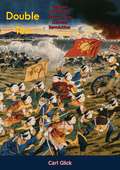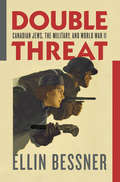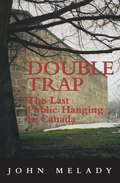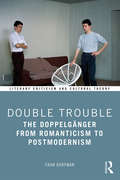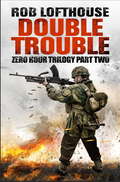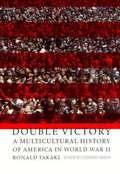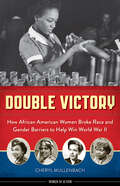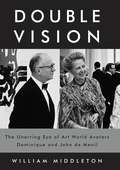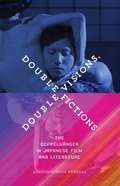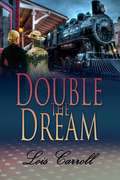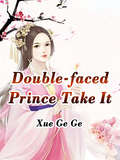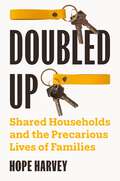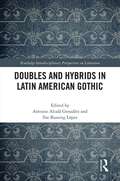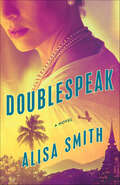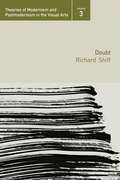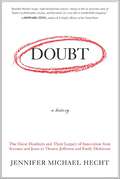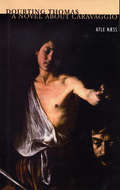- Table View
- List View
Double Ten: Captain O’Banion’s Story of the Chinese Revolution
by Carl GlickThe struggle in China between the Manchus and the old Ming Dynasty had been going on for over three centuries when Captain Ansel O’Banion signed his name in blood to the secret oath with the Po Wong Wui and became involved in the Chinese revolutionary movement. The book reveals how O’Banion commanded the secret-training of Chinese in some 21 cities in the United States; how he was initiated into the secret society of the Po Wong Wui; how the Royalists in this country try to take over the revolutionary movement and attempted to assassinate Dr. Sun Yat-Sen; how he smuggled Dr. Sun into this country; how he obtained for General Homer Lea the secret war plans of Japan, upon which Lea based his book, The Valor of Ignorance; how the Chinese trained in this country as officers were smuggled into China where they enlisted as privates in the Royal Manchu Army, ready to take over when the revolution occurred and why, when the revolution finally happened at Double Ten Day (October 10, 1911) as the Chinese call the Tenth Day of the tenth Month, this revolution was the first great, practically bloodless revolution in the history of the world.
Double Threat: Canadian Jews, the Military, and World War II
by Ellin Bessner"He died so Jewry should suffer no more." These words on a Canadian Jewish soldier's tombstone in Normandy inspired the author to explore the role of Canadian Jews in the war effort. As PM Mackenzie King wrote in 1947, Jewish servicemen faced a "double threat" - they were not only fighting against Fascism but for Jewish survival. At the same time, they encountered widespread antisemitism and the danger of being identified as Jews if captured. Bessner conducted hundreds of interviews and extensive archival research to paint a complex picture of the 17,000 Canadian Jews - about 10 per cent of the Jewish population in wartime Canada - who chose to enlist, including future Cabinet minister Barney Danson, future game-show host Monty Hall, and comedians Wayne and Shuster. Added to this fascinating account are Jews who were among the so-called "Zombies" - Canadians who were drafted, but chose to serve at home - the various perspectives of the Jewish community, and the participation of Canadian Jewish women.
Double Trap: The Last Public Hanging in Canada
by John MeladyA dozen years before the Black Donnellys were butchered at Lucan, Ontario, another murderous rampage took place a few miles away. On June 6, 1868, three men robbed and killed a rich farmer, his wife, and her unborn child. They concocted an alibi, stuck to it, and almost got off. In fact, two of them did.The third, Nicholas Melady, went to prison and fell in love with a beautiful woman in a nearby cell. There to entrap him, she listened, learned, and led him to the gallows. When he was hanged in Goderich, hundreds watched, but thousands were late for the spectacle. They were bitterly disappointed because they had missed the last public hanging in Canada.
Double Trouble: The Doppelgänger from Romanticism to Postmodernism (Literary Criticism and Cultural Theory)
by Eran DorfmanThe double, doppelgänger, is mostly understood as a peculiar figure that emerged in nineteenth-century Romantic and gothic literature. Far from being a merely esoteric entity, however, this book argues that the double, although it mostly goes unnoticed, is a widespread phenomenon that has significant influence on our lives. It is an inherent key element of human subjectivity whose functions, forms, and effects have not yet gained the serious consideration they merit. Drawing on literature, philosophy, and psychoanalysis, and combining a personal story with theoretical interventions, Double Trouble develops a novel understanding of the double and human subjectivity in the last two centuries. It begins with the singular and narcissistic double of Romanticism and gradually moves to the multiple doubles implicated by Postmodernism. The double is what defies unicity and opens up the subject to multiplicity. Consequently, it gradually emerges as a bridge between the I and the Other, identity and difference, philosophy and literature, theory and praxis.
Double Trouble: Zero Hour Trilogy part two
by Rob LofthouseDouble Trouble is the sensational, breathless sequel to Deep Trouble and tells the story of one of the most famous operations of the Second World War: 50,000 airborne troops, nine days of fierce fighting, one bridge too far.
Double Victory: A Multicultural History of America In World War II
by Ronald T. TakakiIt is no small irony, historian Ronald Takaki observes, that the armed struggle for democracy abroad "was accompanied by a disregard for our nation's declaration that 'all men are created equal' in the form of institutional racism of many kinds, from the segregation of African American units to the imprisonment of Japanese Americans and the refusal to grant asylum to Jewish refugees. In "Double Victory", Takaki examines the many contributions of America's minorities to the war effort, celebrating the work of Mexican farm laborers and Anglo women welders, of Navajo code talkers and Filipino foot soldiers, who proclaimed themselves to be "men, not houseboys", of Chinese American combat nurses and Asian Indian gunners. These men and women, Takaki writes, made extraordinary sacrifices in their battle against enemies without and enemies within. Although their efforts were not always appreciated at the time, they helped set in motion the struggle for civil rights that would explode two decades later.
Double Victory: How African American Women Broke Race and Gender Barriers to Help Win World War II (Women of Action)
by Cheryl Mullenbach"Allow all black nurses to enlist, and the draft won't be necessary. . . . If nurses are needed so desperately, why isn't the Army using colored nurses?" "My arm gets a little sore slinging a shovel or a pick, but then I forget about it when I think about all those boys over in the Solomons." Double Victory tells the stories of African American women who did extraordinary things to help their country during World War II. In these pages young readers meet a range of remarkable women: war workers, political activists, military women, volunteers, and entertainers. Some, such as Mary McLeod Bethune and Lena Horne, were celebrated in their lifetimes and are well known today. But many others fought discrimination at home and abroad in order to contribute to the war effort yet were overlooked during those years and forgotten by later generations. Double Victory recovers the stories of these courageous women, such as Hazel Dixon Payne, the only woman to serve on the remote Alaska-Canadian Highway; Deverne Calloway, a Red Cross worker who led a protest at an army base in India; and Betty Murphy Phillips, the only black female overseas war correspondent. Offering a new and diverse perspective on the war and including source notes and a bibliography, Double Victory is an invaluable addition to any student's or history buff's bookshelf.
Double Vision: The Unerring Eye of Art World Avatars Dominique and John de Menil
by William MiddletonThe first and definitive biography of the celebrated collectors Dominique and John de Menil, who became one of the greatest cultural forces of the twentieth century through groundbreaking exhibits of art, artistic scholarship, the creation of innovative galleries and museums, and work with civil rights.Dominique and John de Menil created an oasis of culture in their Philip Johnson-designed house with everyone from Marlene Dietrich and René Magritte to Andy Warhol and Jasper Johns. In Houston, they built the Menil Collection, the Rothko Chapel, the Byzantine Fresco Chapel, the Cy Twombly Gallery, and underwrote the Contemporary Arts Museum. Now, with unprecedented access to family archives, William Middleton has written a sweeping biography of this unique couple. From their ancestors in Normandy and Alsace, to their own early years in France, and their travels in South America before settling in Houston. We see them introduced to the artists in Europe and America whose works they would collect, and we see how, by the 1960s, their collection had grown to include 17,000 paintings, sculptures, drawings, photographs, rare books, and decorative objects. And here is, as well, a vivid behind-the-scenes look at the art world of the twentieth century and the enormous influence the de Menils wielded through what they collected and built and through the causes they believed in.
Double Visions, Double Fictions: The Doppelgänger in Japanese Film and Literature
by Baryon Tensor PosadasA fresh take on the dopplegänger and its place in Japanese film and literature—past and present Since its earliest known use in German Romanticism in the late 1700s, the word Doppelgänger (double-walker) can be found throughout a vast array of literature, culture, and media. This motif of doubling can also be seen traversing historical and cultural boundaries. Double Visions, Double Fictions analyzes the myriad manifestations of the doppelgänger in Japanese literary and cinematic texts at two historical junctures: the interwar period of the 1920s and 1930s and the present day. According to author Baryon Tensor Posadas, the doppelgänger marks the intersection of the historical impact of psychoanalytic theory, the genre of detective fiction in Japan, early Japanese cinema, and the cultural production of Japanese colonialism. He examines the doppelgänger&’s appearance in the works of Edogawa Rampo, Tanizaki Jun&’ichiro, and Akutagawa Ryunosuke, as well as the films of Tsukamoto Shin&’ya and Kurosawa Kiyoshi, not only as a recurrent motif but also as a critical practice of concepts. Following these explorations, Posadas asks: What were the social, political, and material conditions that mobilized the desire for the doppelgänger? And how does the dopplegänger capture social transformations taking place at these historical moments?Double Visions, Double Fictions ultimately reveals how the doppelgänger motif provides a fascinating new backdrop for understanding the enmeshment of past and present.
Double Wedding: A Regency Romance
by Alix MelbourneIn this Regency-era romance, twins separated as babies and reunited as ladies secretly trade lives, only to fall for men they never imagined marrying. Mariotta Abingdon is shocked at the letter she receives, revealing that she has a twin sister from whom she was separated when her parents divorced. Eager to escape the strict household her mother keeps—and her limited social circle—Mariotta would like nothing more than to know the sister she always dreamed of having. Even more so after she meets Diana, and discovers the stylish, well-connected life she lives with their father, who seems quite affable despite his reputation as a notorious rake. As for Diana, she would happily trade life on the social circuit for a chance to escape her role as the dutiful daughter who must keep her extravagant father in check. So, the twins devise a devious plan to switch places. Diana and Mariotta soon become surprised by the shenanigans that ensue. For the sisters suddenly find themselves falling in love with the most unthinkable men—and neither will be able to return to the lives they once knew.
Double the Dream
by Lois CarrollAfter Ingor Oleson left Norway to claim a part of the Dakota Territory as his own, his brother Lars follows to do the same. Now another year later, their uncle keeps his promise and sends Anne and Katrin Anderssen to marry his nephews. The young women are excited and expect their husbands-to-be to have a good life already carved out for them in the unknown land of the Dakota Territory. Lieutenant Adam Johnson allows the sisters to travel with the Army families moving west to the forts there now that the War Between the States has ended. Sergeant Tavis McDougal is his right-hand man. The sisters are charmed by the officers, and wonder if they will find the Oleson brothers as charming. And what will become of them if they can't find the brothers? Will they ever have the happy lives they have come so far to find?
Double-faced Prince, Take It: Volume 1 (Volume 1 #1)
by Xue GeGeGeneral Situ was executed after being framed by his son-in-law Xia Liang and the Minister Xu Zhongkui.The general's daughter, Situ Wushang, was reborn into Xu Ge's servant, and changed his name to Xu Xiaomo. Xu Xiaomo had entered the army as a man to help her father fight the rebellion, but she had fallen deeply into love and a thick fog of mystery. If there was a secret behind this matter, could Xu Xiaomo see clearly that the fog was helping the Situ Family?
Double-faced Prince, Take It: Volume 2 (Volume 2 #2)
by Xue GeGeGeneral Situ was executed after being framed by his son-in-law Xia Liang and the Minister Xu Zhongkui.The general's daughter, Situ Wushang, was reborn into Xu Ge's servant, and changed his name to Xu Xiaomo. Xu Xiaomo had entered the army as a man to help her father fight the rebellion, but she had fallen deeply into love and a thick fog of mystery. If there was a secret behind this matter, could Xu Xiaomo see clearly that the fog was helping the Situ Family?
Double-faced Prince, Take It: Volume 3 (Volume 3 #3)
by Xue GeGeGeneral Situ was executed after being framed by his son-in-law Xia Liang and the Minister Xu Zhongkui.The general's daughter, Situ Wushang, was reborn into Xu Ge's servant, and changed his name to Xu Xiaomo. Xu Xiaomo had entered the army as a man to help her father fight the rebellion, but she had fallen deeply into love and a thick fog of mystery. If there was a secret behind this matter, could Xu Xiaomo see clearly that the fog was helping the Situ Family?
Double-faced Prince, Take It: Volume 4 (Volume 4 #4)
by Xue GeGeGeneral Situ was executed after being framed by his son-in-law Xia Liang and the Minister Xu Zhongkui.The general's daughter, Situ Wushang, was reborn into Xu Ge's servant, and changed his name to Xu Xiaomo. Xu Xiaomo had entered the army as a man to help her father fight the rebellion, but she had fallen deeply into love and a thick fog of mystery. If there was a secret behind this matter, could Xu Xiaomo see clearly that the fog was helping the Situ Family?
Double-faced Prince, Take It: Volume 5 (Volume 5 #5)
by Xue GeGeGeneral Situ was executed after being framed by his son-in-law Xia Liang and the Minister Xu Zhongkui.The general's daughter, Situ Wushang, was reborn into Xu Ge's servant, and changed his name to Xu Xiaomo. Xu Xiaomo had entered the army as a man to help her father fight the rebellion, but she had fallen deeply into love and a thick fog of mystery. If there was a secret behind this matter, could Xu Xiaomo see clearly that the fog was helping the Situ Family?
Doubled Up: Shared Households and the Precarious Lives of Families
by Hope HarveyHow sharing a home with extended family or friends serves as a crucial, but imperfect, private safety net for families with childrenMore than fifteen percent of US children—over eleven million—live in doubled-up households, sharing space with extended family or friends. These households are even more common among low-income families, families of color, and single-parent families, functioning as a private safety net for many in a country with extremely limited public support for families. Yet despite their prevalence, we know little about how shared households form and how they shape family life. Doubled Up is an in-depth look at the experiences of families with children living in doubled-up households.Drawing on extensive interviews with sixty parents living in doubled-up households, Hope Harvey examines what circumstances and motivations lead families to form doubled-up households, how living in shared households affects daily routines, and how families fare after these arrangements dissolve.Harvey shows that although families rely on doubling up to get by in the face of rapidly rising housing costs, precarious labor markets, and unaffordable childcare, these private arrangements are rarely sufficient to overcome such structural barriers. And doubling up incurs its own costs for both host and guest families. For doubled-up families, negotiating household relationships and navigating shared space reshapes family life. Understanding the dynamics of doubled-up households extends scholarship on family life beyond the nuclear family and points the way toward better policies that will serve all families.
Doubles and Hybrids in Latin American Gothic (Routledge Interdisciplinary Perspectives on Literature)
by Antonio Alcalá González Ilse Bussing LópezDoubles and Hybrids in Latin American Gothic focuses on a recurrent motif that is fundamental in the Gothic—the double. This volume explores how this ancient notion acquires tremendous force in a region, Latin America, which is itself defined by duplicity (indigenous/European, autochthonous religions/Catholic). Despite this duplicity and at the same time because of it, this region has also generated "mestizaje," or forms resulting from racial mixing and hybridity. This collection, then, aims to contribute to the current discussion about the Gothic in Latin America by examining the doubles and hybrid forms that result from the violent yet culturally fertile process of colonization that took place in the area.
Doublespeak: A Novel (Lena Stillman Series #2)
by Alisa SmithThe followup to the literate and action-packed historical thriller Speakeasy, Doublespeak finds plucky protagonist Lena on a journey back to her past. Lieutenant Lena Stillman has been left, nearly alone, on her code-breaking mission in remote Alaska. World War II has been over for a month, but due to crimes committed a lifetime ago, Lena is still under the control of the powerful Miss Maggie.Shaken by her role in the disappearance of Corporal Link Hughes—and by her own misjudgment of his character—Lena yearns for an opportunity to redeem them both. Then she receives a shocking message containing Link’s potential location: Siam. Embarking on a clandestine rescue mission to Bangkok, Lena is reunited with shadows from her past—including loyal friend Byron who is eager to escape his safe, dull life and the attractive yet dangerous “William Yardly.” As personal and political allegiances shift in the postwar maelstrom, it seems impossible to know who is good or bad, innocent or culpable and whether they are motivated by love or revenge.Overlaying rich historic detail and an intricate plot, Doublespeak is an entrancing sequel to Alisa Smith’s first novel Speakeasy, which received the honor of being a Walter Scott Prize Academy recommended book of 2018.
Doubly Chosen: Jewish Identity, the Soviet Intelligentsia, and the Russian Orthodox Church
by Judith Deutsch KornblattDoubly Chosen provides the first detailed study of a unique cultural and religious phenomenon in post-Stalinist Russia—the conversion of thousands of Russian Jewish intellectuals to Orthodox Christianity, first in the 1960s and later in the 1980s. These time periods correspond to the decades before and after the great exodus of Jews from the Soviet Union. Judith Deutsch Kornblatt contends that the choice of baptism into the Church was an act of moral courage in the face of Soviet persecution, motivated by solidarity with the values espoused by Russian Christian dissidents and intellectuals. Oddly, as Kornblatt shows, these converts to Russian Orthodoxy began to experience their Jewishness in a new and positive way.
Doubt (Theories of Modernism and Postmodernism in the Visual Arts)
by Richard ShiffIn an age where art history’s questions are now expected to receive answers, Richard Shiff presents a challenging alternative. In this essential new addition to James Elkins’s series Theories of Modernism and Postmodernism in the Visual Arts, Richard Shiff embraces doubt as a critical tool and asks how particular histories of art have come to be. Shiff’s turn to doubt is not a retreat to relativism, but rather an insistence on clear thinking about art. In particular, Shiff takes issue with the style of self-referential art writing seemingly 'licensed' by Roland Barthes. With an introduction by Rosie Bennett, Doubt is a study of the tension between practicing art and practicing criticism.
Doubt and Skepticism in Antiquity and the Renaissance
by Michelle ZerbaThis book is an interdisciplinary study of the forms and uses of doubt in works by Homer, Sophocles, Aristophanes, Cicero, Machiavelli, Shakespeare, and Montaigne. Based on close analysis of literary and philosophical texts by these important authors, Michelle Zerba argues that doubt is a defining experience in antiquity and the Renaissance, one that constantly challenges the limits of thought and representation. The wide-ranging discussion considers issues that run the gamut from tragic loss to comic bombast, from psychological collapse to skeptical dexterity, and from solitary reflection to political improvisation in civic contexts and puts Greek and Roman treatments of doubt into dialogue not only with sixteenth-century texts, but with contemporary works as well. Using the past to engage questions of vital concern to our time, Zerba demonstrates that although doubt sometimes has destructive consequences, it can also be conducive to tolerance, discovery, and conversation across sociopolitical boundaries.
Doubt, Atheism, and the Nineteenth-Century Russian Intelligentsia
by Victoria FredeThe autocratic rule of both tsar and church in imperial Russia gave rise not only to a revolutionary movement in the nineteenth century but also to a crisis of meaning among members of the intelligentsia. Personal faith became the subject of intense scrutiny as individuals debated the existence of God and the immortality of the soul, debates reflected in the best-known novels of the day. Friendships were formed and broken in exchanges over the status of the eternal. The salvation of the entire country, not just of each individual, seemed to depend on the answers to questions about belief. Victoria Frede looks at how and why atheism took on such importance among several generations of Russian intellectuals from the 1820s to the 1860s, drawing on meticulous and extensive research of both published and archival documents, including letters, poetry, philosophical tracts, police files, fiction, and literary criticism. She argues that young Russians were less concerned about theology and the Bible than they were about the moral, political, and social status of the individual person. They sought to maintain their integrity against the pressures exerted by an autocratic state and rigidly hierarchical society. As individuals sought to shape their own destinies and searched for truths that would give meaning to their lives, they came to question the legitimacy both of the tsar and of Russia's highest authority, God.
Doubt: The Great Doubters and Their Legacy of Innovation from Socrates and Jesus to Thomas Jefferson and Emily Dickinson
by Jennifer Michael HechtIn the tradition of grand sweeping histories such as From Dawn To Decadence, The Structure of Scientific Revolutions, and A History of God, Hecht champions doubt and questioning as one of the great and noble, if unheralded, intellectual traditions that distinguish the Western mind especially-from Socrates to Galileo and Darwin to Wittgenstein and Hawking. This is an account of the world's greatest ‘intellectual virtuosos,' who are also humanity's greatest doubters and disbelievers, from the ancient Greek philosophers, Jesus, and the Eastern religions, to modern secular equivalents Marx, Freud and Darwin—and their attempts to reconcile the seeming meaninglessness of the universe with the human need for meaning,This remarkable book ranges from the early Greeks, Hebrew figures such as Job and Ecclesiastes, Eastern critical wisdom, Roman stoicism, Jesus as a man of doubt, Gnosticism and Christian mystics, medieval Islamic, Jewish and Christian skeptics, secularism, the rise of science, modern and contemporary critical thinkers such as Schopenhauer, Darwin, Marx, Freud, Nietzsche, the existentialists.
Doubting Thomas: A Novel about Caravaggio
by Atle NaessComing somewhere between Peter Ackroyd and Perfume, Doubting Thomas is an innovative and fascinating novel about the renowned Italian painter Caravaggio. The plot centers around the events of a May evening in Rome in 1606, when Caravaggio was challenged to a duel and killed a man. Who was this man Caravaggio? What happened on that fateful night? What was the cause of the fight that forced him to flee Rome? Different narrators, including a drunken architect, the painter's own brother, some ladies of the night, a town clerk, and a close friend of Caravaggio all present their versions of the events that took place that night, shedding light on what happened and, as a result, on the painter's revolutionary art. Doubting Thomas is a book about ideas and about a period in time that witnessed the coming of enlightenment and dramatic changes in thinking. It is first and foremost a novel about human destiny, sensuality, and purpose of mind; brutality and love, exploration, and devotion. How far can a painter go? Where is the line between what is sacred and what is profane? How can a drunkard and a womaniser such as Caravaggio create art that speaks of fervent aesthetics and even religious devotion?
